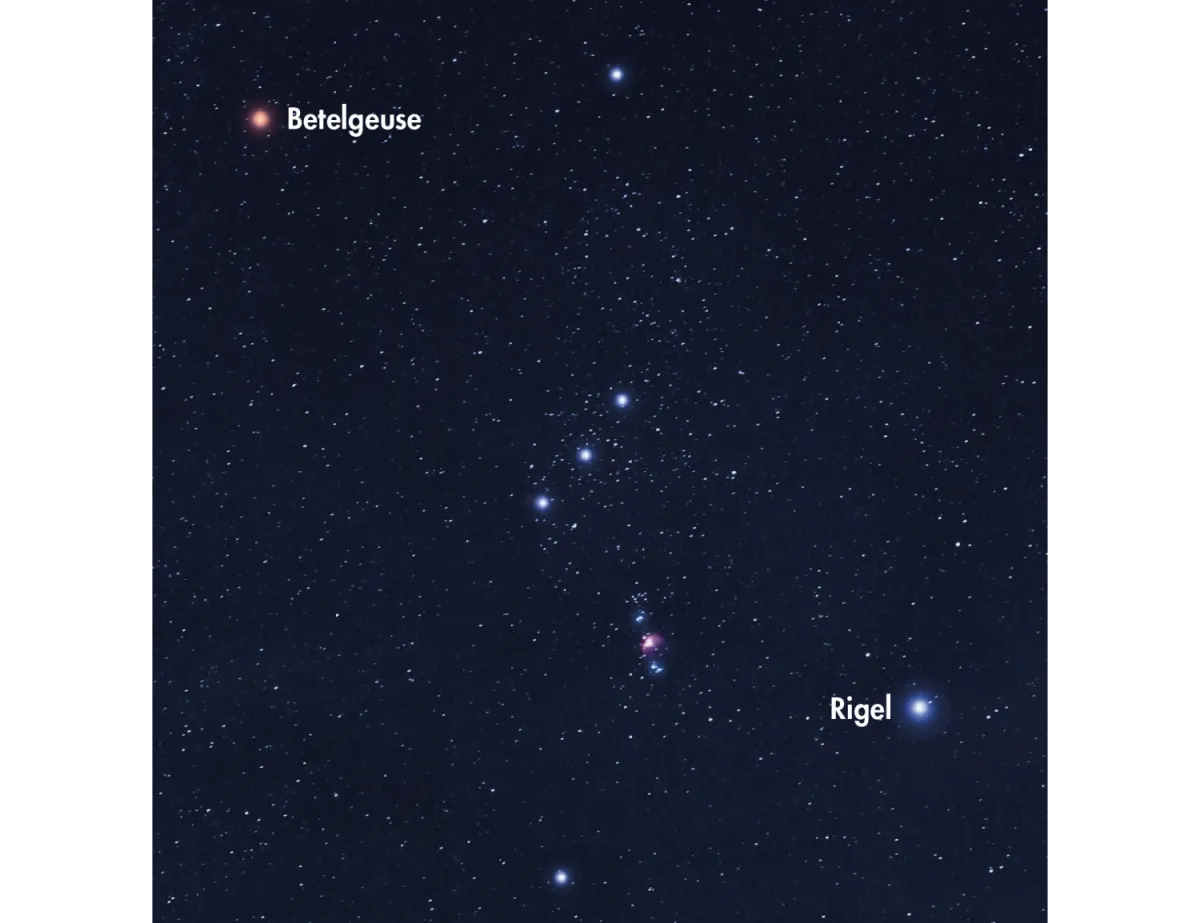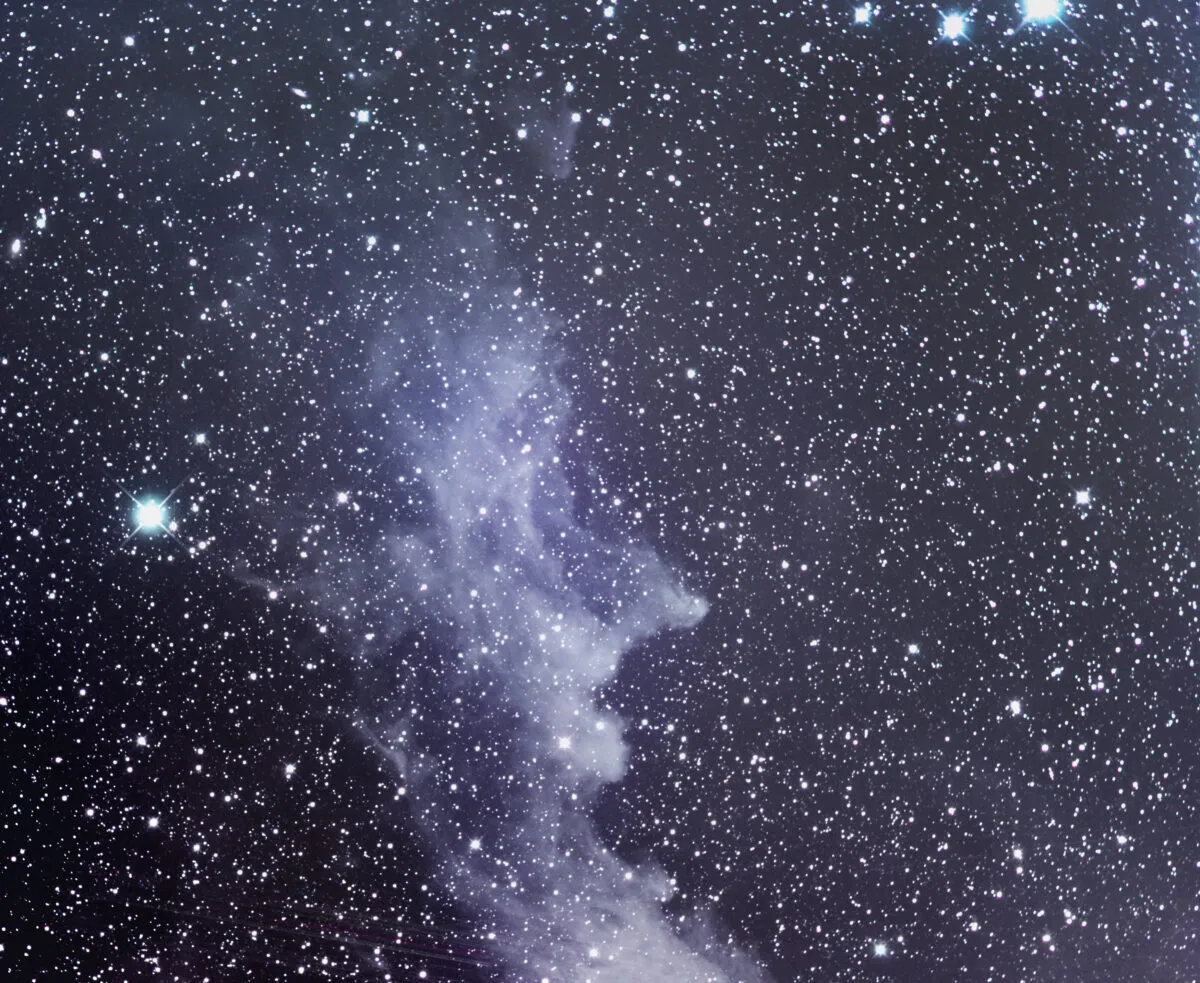There are two famous supergiant stars in the main pattern of Orion. In the northeast corner lurks orange-hued Betelgeuse (Alpha (α) Orionis), a red-supergiant star coming to the end of its life.
In the southwest corner is the blue-supergiant Rigel (Beta (β) Orionis).
Rigel represents Orion’s foot – the name originating from the Arabic ‘rijl al-Jauza’ meaning ‘foot of the Central One’ (Orion was known to ancient Arabic astronomers as the Central One).
Although designated beta, at mag. +0.1 Rigel is brighter than Betelgeuse.
One possible explanation is that Betelgeuse is variable and may have been close to peak brightness when the labelling was decided.

The seventh brightest star in the sky, Rigel lies 863 lightyears from the Sun.
It’s a massive object estimated to be 79 times larger than the Sun and around 120,000 times as luminous.
Rigel is classed as an Alpha Cygni-type variable exhibiting a small magnitude variation between +0.05 and +0.18. At around 10 million years old it is a relatively young star.
Rigel has a mag. +6.7 companion 9 arcseconds away. Although not particularly faint, Rigel’s brilliance makes its companion hard to see.
Rigel B is located 2,500 AU from Rigel and although it shares the same proper motion, its orbital period is unknown, probably around 20,000 years.
The companion is actually a close binary in its own right, its two components in a mutual 400-year orbit separated by 100 AU.
A fourth member of the system sits 44 arcseconds from Rigel, shining away at a rather dim 15th magnitude.

A popular associated target for astrophotography is the blue reflection nebula known as the Witch Head Nebula, IC 2118.
It gets this name because it looks like the profile of a witch’s face.
The nebula sits 2.5° northwest of Rigel and is visually extremely faint.
Amazingly, although it’s physically located 40 lightyears from Rigel, it is Rigel’s light that illuminates it.
This guide originally appeared in the December 2018 issue of BBC Sky at Night Magazine.
